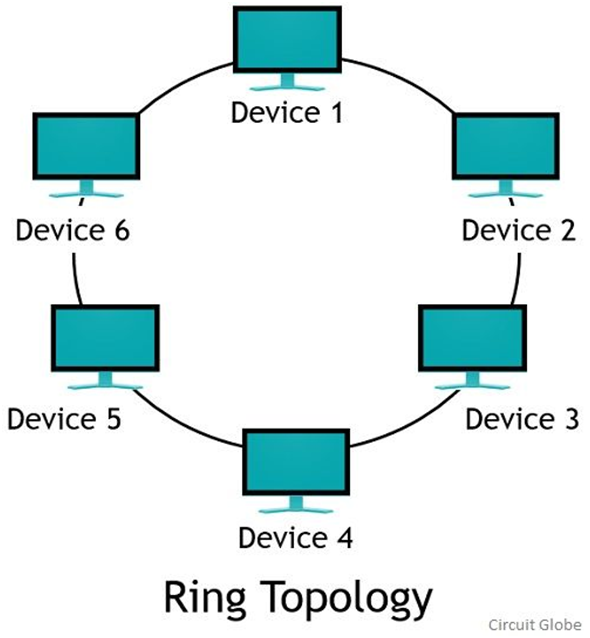Ring Network: A ring network is a type of computer network topology in which data travels in a circular path, with each device connected to two other devices. In a ring network, data is transmitted from one device to the next in a circular pattern, allowing each device to receive and transmit data. One of the key features of a ring network is that it is self-healing. If one device in the network fails, the data can continue to flow in the opposite direction, allowing the network to continue functioning. This makes ring networks a reliable and resilient option for network design. In a ring network, data is transmitted using a protocol called token passing. In token passing, a token, which is a special data packet, is passed from one device to the next in the network. The device that has the token is the only device that is allowed to transmit data. When a device has transmitted its data, it passes the token to the next device in the network. Ring networks are typically used in small to medium-sized networks where data transmission speed and reliability are important considerations. They are also commonly used in metropolitan area networks (MANs), where high-speed data transmission is required. There are two main types of ring networks: logical ring networks and physical ring networks. Logical ring networks are virtual networks that are created using software, while physical ring networks are actual physical connections between devices. One of the main advantages of ring networks is their reliability. Because data can continue to flow in the opposite direction if one device fails, the network remains operational even if one device experiences a failure. This makes ring networks a good choice for mission-critical applications where downtime is not an option. Another advantage of ring networks is their simplicity. Because data only flows in one direction, there is no need for complex routing protocols. This makes it easier to manage and maintain the network, and reduces the risk of errors and network congestion. Ring networks are a type of computer network topology in which data travels in a circular path, with each device connected to two other devices. They are typically used in small to medium-sized networks and are known for their reliability and simplicity. By understanding the benefits and limitations of ring networks, network administrators can make informed decisions about the best network topology for their organization.

No comments:
Post a Comment